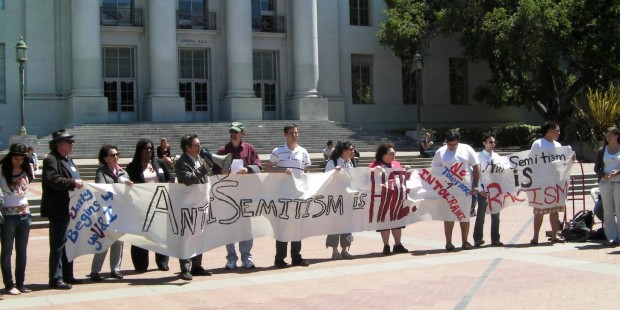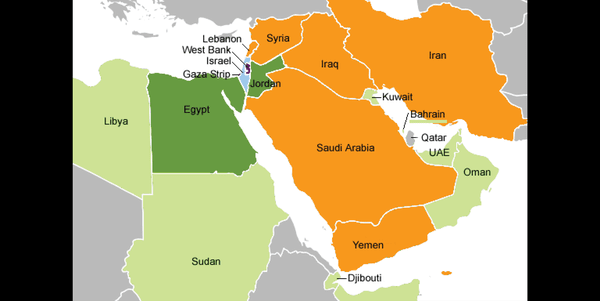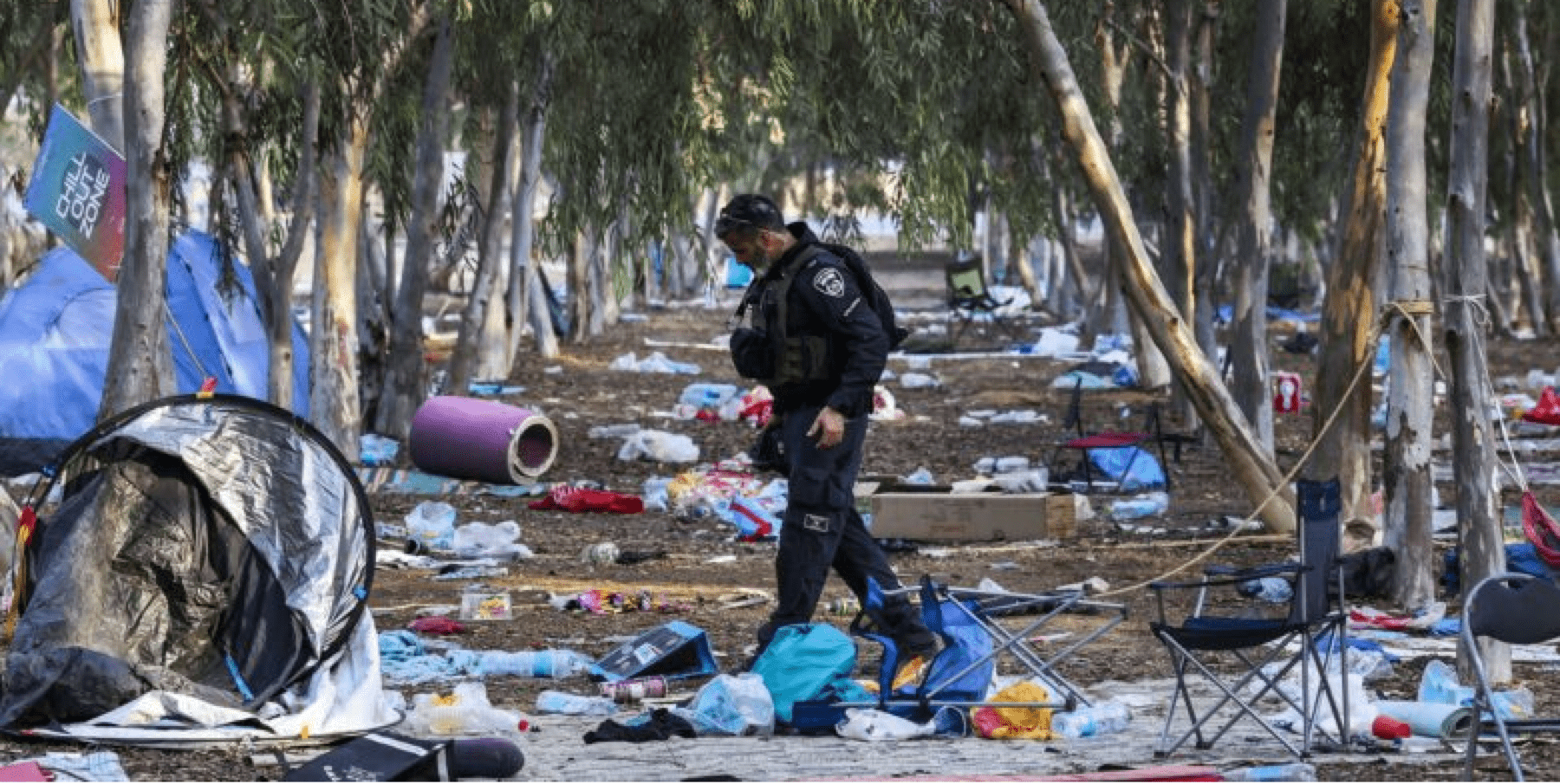The History of Anti-Semitism
July 29, 2014

The belief or behavior hostile toward Jews just because they are Jewish. It may take the form of religious teachings that proclaim the inferiority of Jews, for instance, or political efforts to isolate, oppress, or otherwise injure them. It may also include prejudiced or stereotyped views about Jews.
 Desecrated Graves
Desecrated Graves
Hostility toward Jews dates to ancient times, perhaps to the beginning of Jewish history. From the days of the Bible until the Roman Empire, Jews were criticized and sometimes punished for their efforts to remain a separate social and religious group – one that refused to adopt the values and the way of life of the non-Jewish societies in which it lived.
The rise of Christianity greatly increased hatred of Jews. They became seen not merely as outsiders but as a people who rejected Jesus and crucified him – despite the fact that the Roman authorities ordered and carried out the crucifixion. By the high middle ages (11th –14th centuries), Jews were widely persecuted as barely human “Christ-killers” and “Devils.” Forced to live in all-Jewish ghettos, they were accused of poisoning rivers and wells during times of disease. Some were tortured and executed for supposedly abducting and killing Christian children to drink their blood or to use to it in baking matzoh – a charge known as the “blood libel.” A large number were forced to convert to Christianity to avoid death, torture, or expulsion, though many secretly practiced Judaism after their conversions. (In recent times, the Catholic church and other Christian churches have rejected these anti-Semitic falsehoods.)
In the 18th century, as the influence of Christianity began to lessen during the Enlightenment – which celebrated the rights and possibilities of men and women to a far greater extent than ever before – religiously based hatred of Jewishness gave way to non-religious criticism: Judaism was attacked as an outdated belief that blocked human progress. Jewish separatism was again targeted. As European countries began to take modern shape in the 19th century and national pride grew, Jews, who were still usually deprived of civil rights and lived throughout Europe as outsiders, were subjected to further hostility. This hostility resulted at times in deadly persecution, as in the late-19th century Russian pogroms — violent attacks on Jewish communities with the aid or indifference of the government.
At the same time, in response to the decline of Christian belief and the growing number of Jews beginning to join the mainstream of European society (a trend known as “assimilation”), anti-Semites turned to the new “racial science,” an attempt, since discredited, by various scientists and writers to “prove” the supremacy of non-Jewish whites. The opponents of Jews argued that Jewishness was not a religion but a racial category, and that the Jewish “race” was biologically inferior.
The belief in a Jewish race would later become Germany’s justification for seeking to kill every Jewish person in lands Germany occupied during World War II, whether the person practiced Judaism or not. In fact, even the children or grandchildren of those who had converted to Christianity were murdered as members of the Jewish race. The Holocaust, as this systematic mass extermination between 1939-1945 is known, resulted in the death of six million Jews — more than a third of the world’s Jewish population. While the rise to power of the Nazis (Germany’s leaders during World War II) in the 1920s and 1930s involved numerous social and political factors, the views that helped turn anti-Semitism into official government policy included belief in the inborn superiority of “Aryans,” or whites; belief that Jews destroyed societies; that Jews secretly worked together to gain control of the world; and that Jews already controlled world finance, business, media, entertainment, and Communism.
In the half-century since World War II, public anti-Semitism has become much less frequent in the Western world. While stereotypes about Jews remain common, Jews face little physical danger. The hatred of Jewishness and the conspiracy beliefs of past eras are for the most part shared only by tiny numbers of those on the fringes of society (although as the World Trade Center and Oklahoma bombings showed, even a handful of extremists can carry out acts of great violence). There are exceptions, of course: disagreement over policy toward the State of Israel has created opportunities in which the expression “Zionist” – support for Israel as the Jewish homeland – is often used as an anti-Semitic code word for “Jew” in mainstream debate. Holocaust denial and other recent re-writings of history – such as the false claim that Jews controlled the Atlantic slave trade – lie about the events of the past in order to make Jews seem underhanded and evil.
More seriously, many nations in Europe and in the former Soviet empire are struggling, mostly due to unsettled or chaotic economic and social conditions, with movements opposing “foreigners” – including recent immigrants and traditional enemies. These movements champion racial or national supremacy, and call for the type of charismatic, authoritarian leader that historically persecuted Jews and other minorities.
But while parts of Europe remain caught up in racial unrest, the Middle East is home to the harshest anti-Semitism in the world today. Nazi-like language is regularly expressed by the media and governments in the countries that oppose Israel and the West. And as dozens and dozens of terrorist incidents have demonstrated, there are many in Middle Eastern countries willing to act on these beliefs.
Similar posts
-

Israel Has The Most Moral Military In The World
April 10, 2024In the heart of a region often riddled with conflict, Israel stands out not only for its technologi...
-

The Resilience of the Israeli People
April 2, 2024Visitors from around the world have seen Hamas's October 7th Massacre's destruction in southern Isr...
-

Israel: Small Size, Big Impact
March 21, 2024Nestled along the eastern edge of the Mediterranean Sea, Israel is a land of immense historical sig...
-

Israelis Are Fighting For Their Lives
February 21, 2024By Jonathan S. Tobin The world looks a lot different from Kibbutz Kfar Aza than it does in the U...
-

Over 2 Million Arabs Live In Israel
January 23, 2024In the complex landscape of the Middle East, where diverse cultures and identities intersect, Israe...
-

'Fauda' Star Idan Amedi Injured Fighting in Gaza
January 8, 2024Despite the severity of his injuries, Amedi's father assured Israeli news channels that his life is...
-

Israel Is A Great Country To Live In
December 28, 2023Nestled at the crossroads of the Middle East, Israel stands as a vibrant and dynamic nation, offeri...
-

Dear World: I Don't Care
November 2, 2023By Avi Lewis I don’t care that you sympathize with Hamas I know you wouldn’t tolerate any of ...





















There is no reason for someone to hate a group of people for no reason.
They should take an anonymous census to find out why people hate on the Jews so much.